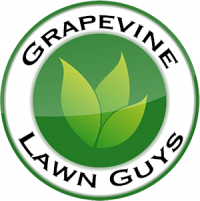For Texas homeowners, your landscape is more than just curb appeal—it’s an investment in your property value and quality of life. The harsh Texas climate presents unique challenges, from scorching summers to unexpected freezes, making the selection of the right landscaping company crucial. This guide will help you navigate the process of finding a qualified professional who can create and maintain a beautiful, resilient landscape suited to your specific Texas region.
1. Licensing and Insurance
Texas-specific Licensing Requirements
In Texas, landscaping companies must hold various licenses depending on the services they offer. At minimum, any company performing irrigation work must have a licensed irrigator on staff, as required by the Texas Commission on Environmental Quality (TCEQ). For companies that apply pesticides, a Texas Department of Agriculture pesticide applicator license is mandatory.
Insurance Protection
Always verify that your landscaper carries proper landscaping insurance. This protects you from liability if workers are injured on your property or if damage occurs during the project. According to industry experts at ContractorNerd, comprehensive landscaping insurance in Texas should include general liability and property damage coverage to fully protect both the contractor and homeowner throughout the project.
Request proof of:
- General liability insurance (minimum $1 million coverage)
- Workers’ compensation insurance
- Vehicle and equipment insurance
Don’t simply take their word for it—ask to see current certificates and verify their authenticity with the insurance provider.
2. Experience and Portfolio
Years Serving Texas Properties
A company’s longevity in the Texas market speaks volumes about their ability to deliver consistent results in our challenging environment. Ask how long they’ve been in business locally, as Texas landscaping differs significantly from other regions.
Experience with Regional Climate Challenges
Texas spans multiple climate zones, from the humid eastern regions to the arid west. The landscaper you choose should have specific experience in your region, understanding:
- Local soil conditions
- Regional rainfall patterns
- Temperature extremes in your specific area
- Microclimates within your property
Photo Evidence of Similar Projects
Request a portfolio of completed projects, particularly those similar to what you envision. Look for:
- Before and after photos
- Projects of similar scope and style
- Landscapes that have matured over time (1-3 years after installation)
- Properties in your neighborhood or with similar conditions
3. Services Offered
Maintenance Packages vs. One-time Services
Determine whether you need ongoing maintenance or a one-time project. Quality Texas landscapers typically offer:
- Regular maintenance schedules adapted to Texas growing seasons
- Seasonal cleanup services
- Flexible service levels based on your property’s needs
- Clear pricing for both regular and additional services
Specialized Capabilities
For comprehensive landscape management, look for companies offering:
- Irrigation system installation and maintenance (critical in Texas)
- Hardscaping experience (patios, walkways, retaining walls)
- Outdoor lighting systems designed for Texas heat
- Water feature installation and maintenance
- Sustainable landscape design
Seasonal Availability
Texas landscapes require different care throughout the year. Ensure your landscaper offers:
- Spring preparation and planting
- Summer heat management and water conservation
- Fall cleanup and winter preparation
- Year-round weed and pest control strategies
4. Texas Plant Knowledge
Familiarity with Native Species
A qualified Texas landscaper should demonstrate extensive knowledge of Texas native plants, which:
- Require less water and maintenance
- Support local pollinators and wildlife
- Survive temperature extremes better than non-natives
- Contribute to regional ecological health
Drought-resistant Landscaping Expertise
With water restrictions common across Texas, look for companies that:
- Implement xeriscaping principles
- Use efficient irrigation technologies
- Group plants by water needs (hydrozoning)
- Understand soil amendment for better water retention
Local Pest Management Approaches
Texas-specific pests require targeted approaches. Your landscaper should be familiar with:
- Fire ant management strategies
- Chinch bug prevention in St. Augustine lawns
- Strategies for dealing with armadillos and other regional wildlife
- Integrated Pest Management techniques that minimize chemical use
5. Client Feedback
Reference Check Process
Always request references from current clients, particularly those with:
- Similar properties (size, features, location)
- Long-term relationships with the company
- Recent project completions
Review Assessment Tips
When evaluating online reviews or testimonials:
- Look for consistent themes in feedback
- Pay attention to how the company responds to negative reviews
- Check multiple platforms (Google, BBB, Angie’s List, NextDoor)
- Note mentions of Texas-specific challenges and solutions
Questions for Previous Clients
When contacting references, ask:
- Was the project completed on time and within budget?
- How did the company handle unexpected issues?
- Has the landscape held up through extreme Texas weather events?
- Would they hire the company again?
Conclusion
Selecting the right landscaping company in Texas requires thorough research and due diligence, but the effort pays dividends in a beautiful, sustainable landscape that withstands our unique climate challenges. Take time to verify credentials, review portfolios, check references, and ensure proper insurance coverage. By following these guidelines, you’ll find a qualified partner who can transform your Texas property into an outdoor oasis that enhances both your lifestyle and property value for years to come.

